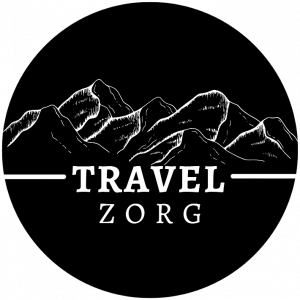

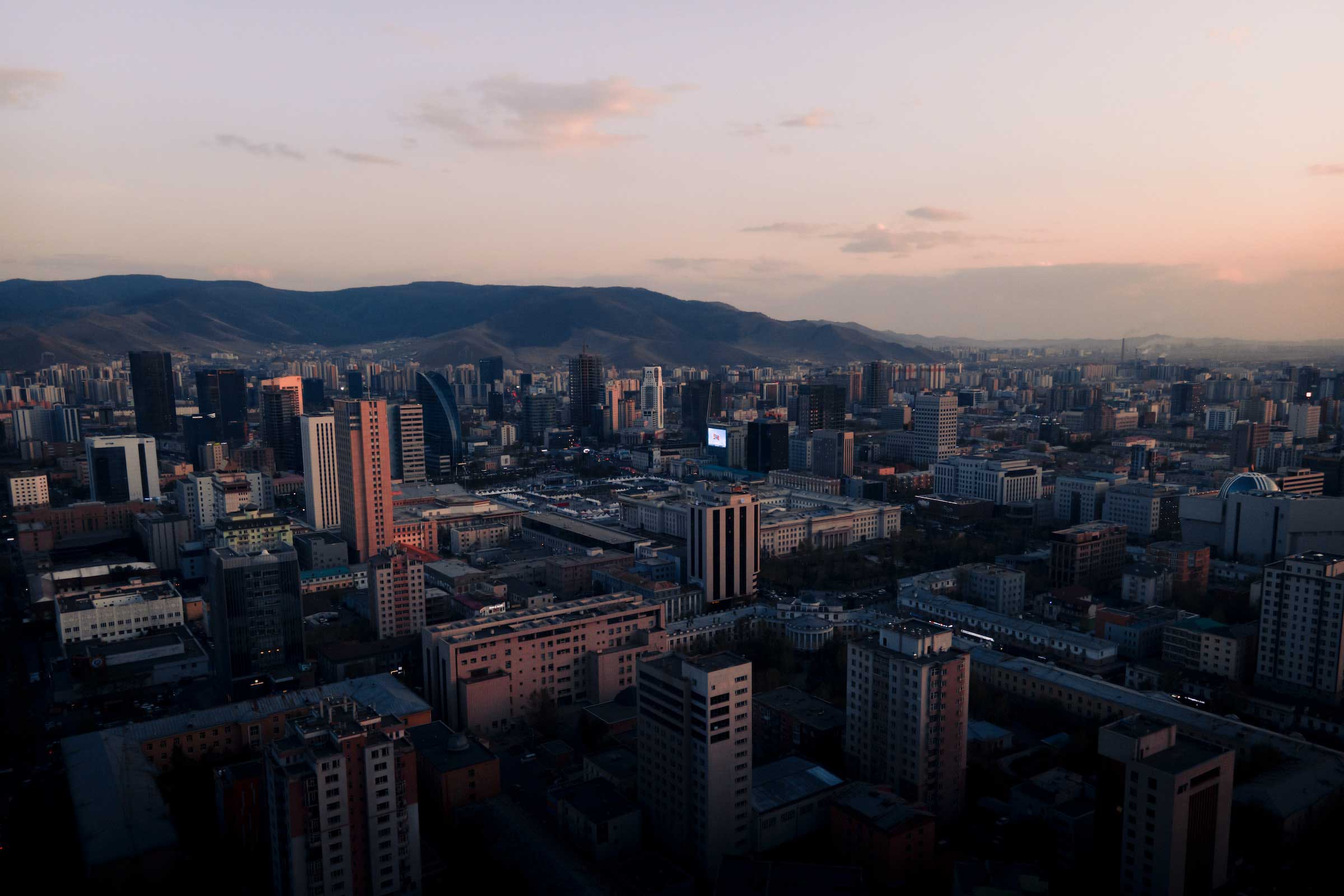
It comes as no surprise that Ulaanbaatar being the capital of Mongolia is also the country’s largest city. In this article, we will look over some interesting facts about the city and expand on its history, geography, culture, and many other aspects of this incredible nomadic city.
The name Ulaanbaatar comes from the Mongolian language and means “red hero” in English. This name was given to the city in 1924 after the Mongolian people’s revolution. After Ulaanbaatar was given its new name, the Mongolian people began to rename many different cities and landmarks to solidify their new freedom.
The “Red” in Ulaanbaatar refers to the color of communism, which was the dominant ideology in Mongolia during the 20th century, although the country is now a democracy the name still remains the same. The “Hero” part of the name is thought to be a reference to the city’s historical significance as a center of Mongolian culture and as a site of resistance against foreign rule at the time.
Today, the name Ulaanbaatar is recognized both within Mongolia and around the world as the capital and largest city of the country.
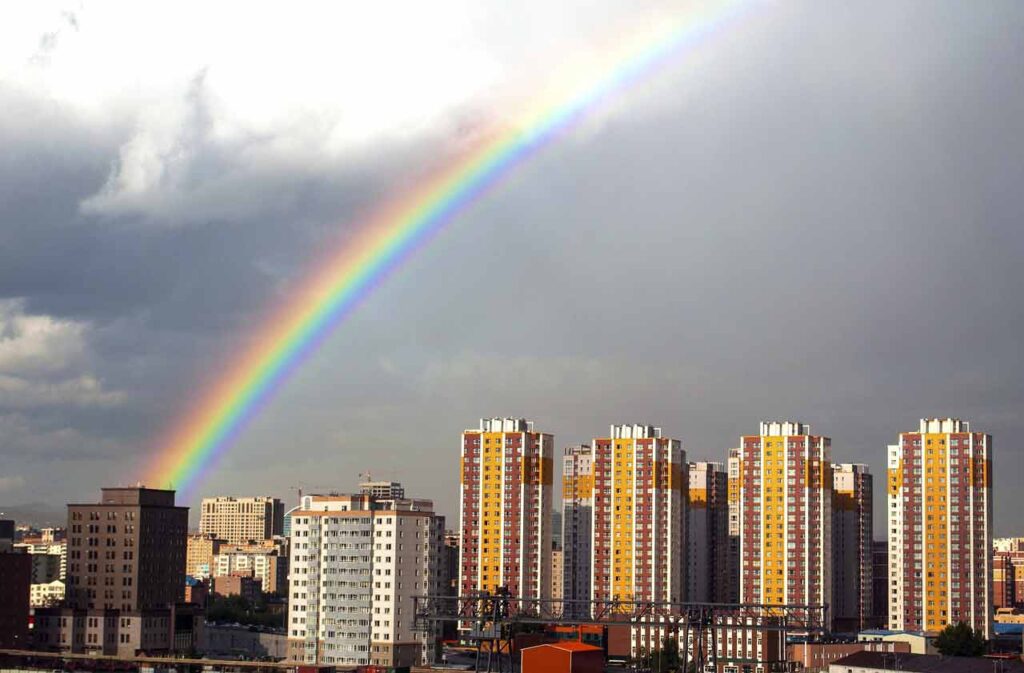
Ulaanbaatar has a rich and complex history that dates back centuries. The city was first established in 1639 as a Buddhist monastic center. At the time, it was a small settlement located in the valley of the Tuul River, which provided a source of water and fertile land for agriculture.
Over the following centuries, Ulaanbaatar moved locations 28 times, grew, and evolved. In the 17th and 18th centuries, the city was ruled by the Qing Dynasty of China, which maintained a garrison in the area to protect its interests. In the late 18th century, Mongolia declared independence from China, and Ulaanbaatar became the capital of the newly formed Bogd Khanate of Mongolia. The Bogd Khanate was the government that ruled Mongolia from 1911 to 1919 and again from 1921 to 1924.
In 1921, the Mongolian People’s Party led a successful revolution against the Chinese-backed government that retook Ulaanbaatar in 1919, and Ulaanbaatar became the capital of the new Mongolian People’s Republic. The city was renamed Ulaanbaatar in 1924, and under the new socialist government, it underwent significant modernization and industrialization with help from the Soviet Union.
Today, Ulaanbaatar is a thriving city. Its history is a testament to the resilience and strength of the Mongolian people, who have overcome numerous challenges and obstacles to build this beautiful and unique capital city.
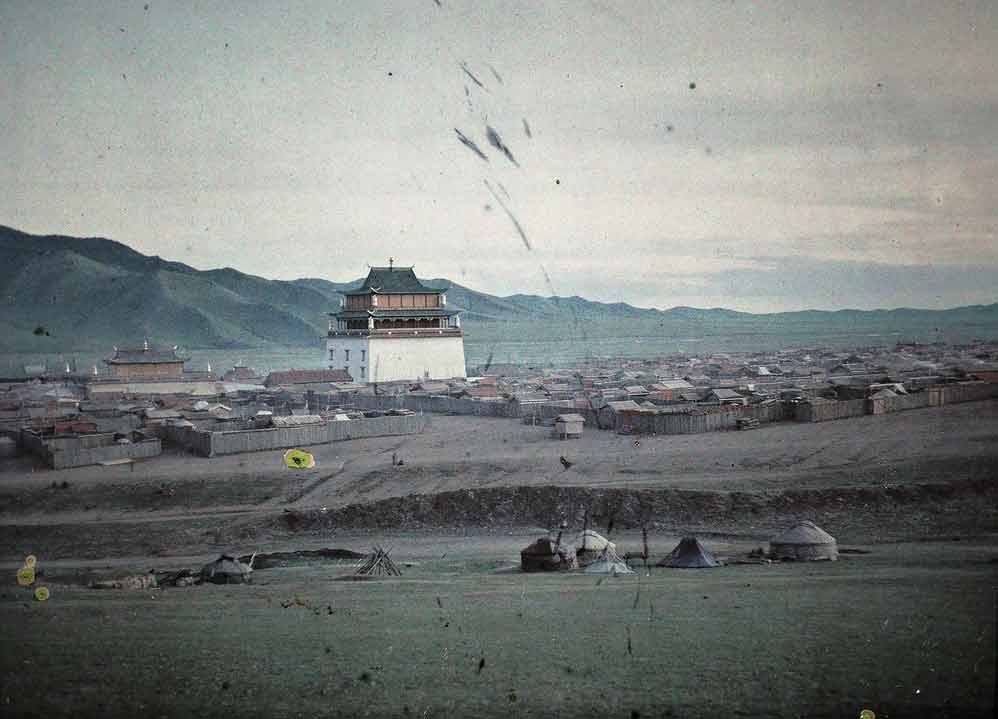
As previously mentioned Ulaanbaatar is the largest city in Mongolia, and also serves as the capital city of Mongolia. Knowing this it isn’t surprising that the population of Ulaanbaatar is quite large coming in at around 1.65 million people according to the latest estimates.
What might come as a surprise is that just under half of Mongolia’s entire population lives in Ulaanbaatar. The city’s population has grown rapidly in recent years, fueled in part by urbanization and migration from rural areas. the city also has one of the youngest populations in the world with about 63 % of its residents being younger than 35-year-olds and 28.2% of its residents being under 15 years old.
Despite its rapid growth and modernization, Ulaanbaatar is also home to many traditional nomadic herders who live in the city’s ger districts. These areas are characterized by their traditional Mongolian dwellings, or gers, and lack of basic infrastructure and services. The government and international organizations are working to improve living conditions in these areas and address the challenges faced by the city’s rapidly growing population.
Ulaanbaatar is located at an altitude of 1,350 meters (4,429 feet) above sea level, which makes it one of the world’s highest capital cities. The city is also situated in a valley surrounded by four sacred mountains the Bogd Khan Mountain to the south, Songino Khairkhan Mountain to the west, Chingeltei Mountain to the east, and the Bayanzurkh Mountain to the north.
The altitude and the surrounding mountains have a significant impact on the climate of Ulaanbaatar. The city has a subarctic climate, with long, cold winters and short, warm summers. The average temperature in January, the coldest month, is around -25°C (-13°F), while the average temperature in July, the warmest month, is around 17°C (63°F).
The high altitude and the unique climate of Ulaanbaatar make it a challenging environment for many plants and animals. However, the region is home to several species of wildlife, including wild horses, ibex, wolves, and eagles. The surrounding mountains also provide a beautiful backdrop for the city, and are a popular destination for hiking and outdoor recreation among locals and foreigners alike.

As previously mentioned Ulaanbaatar experiences extreme temperature fluctuations throughout the year, which can make it a challenging place to live for some. The city has a subarctic climate, with long, cold winters and short, mild summers.
During the winter months, it is quite common for night-time temperatures in Ulaanbaatar to plummet to as low as -40°C (-40°F), making it on average the coldest capital city in the world. During the day the temperatures still drop very low to an average temperature of around -20°C (68°F). The frigid temperatures can make it difficult to get around, with roads and sidewalks often covered in snow and ice. In addition, the cold can cause problems with infrastructure, such as burst pipes and power outages. Along with the cold weather, Ulaanbaatar also experiences an average annual snowfall of around 130 centimeters (51 inches) every year.
Despite how cold it gets in the winter months Ulaanbaatar can also get extremely hot in the short summer months with a temperature ranging between 10°C to 27°C (50°F to 80°F). it can also get as hot as 33°C in some rare cases. During the warmer months, the warmth brings out greenery and an opportunity for outdoor activities, such as hiking and picnicking.
Not exactly in Ulaanbaatar but rather about 54 kilometers (33 miles) east of the city there is a magnificent 40-meter (131-foot) tall equestrian statue of Genghis Khan.
This statue is the largest equestrian statue in the world and was unveiled in 2008. The statue depicts Genghis Khan on horseback, with his right arm raised, holding a golden whip. The statue is made of stainless steel. Visitors can climb up to the statue’s head and look out over the surrounding countryside.
The statue is not just a tourist attraction, but also a symbol of Mongolian national pride and identity. Genghis Khan is considered a national hero in Mongolia, and his legacy as a conqueror and unifier of the Mongolian tribes is still celebrated today. The statue’s location near the vast steppes of Mongolia is also a nod to the importance of horses in Mongolian culture and history.
In addition to the statue, there is also a museum at the base of the statue that showcases artifacts and exhibits on the life of Genghis Khan and the history of the Mongolian empire. For a article that expands more on the Genghis khan equestrian statue press (Here).
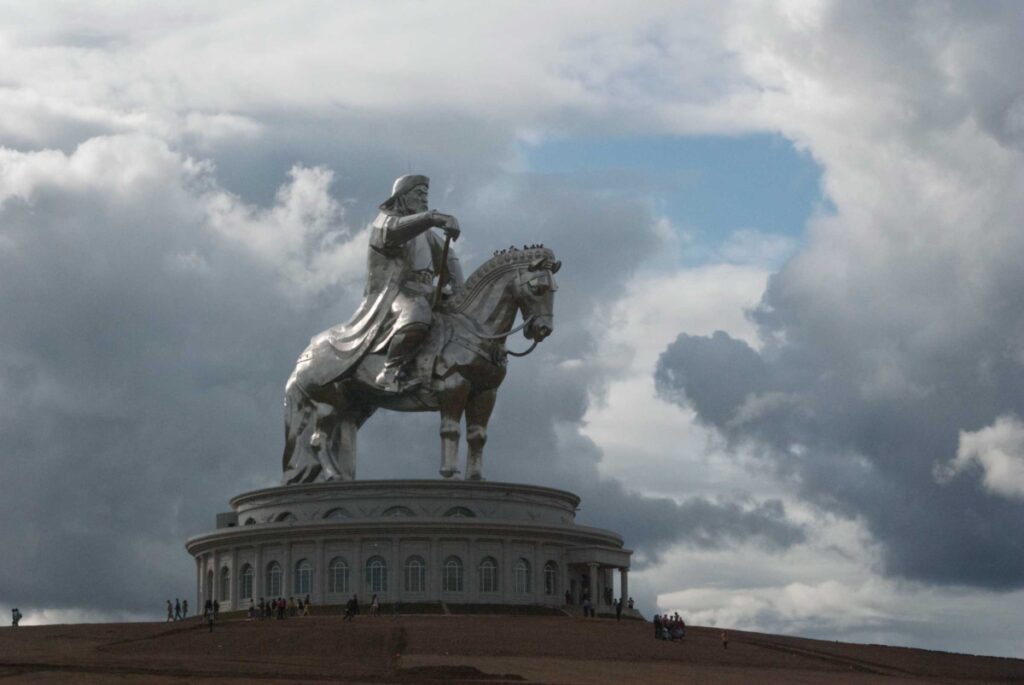
Ulaanbaatar has a diverse culinary scene, with a mix of Mongolian, Russian, Chinese, Korean, and Western cuisines represented. Fast food chains are also becoming more common in Ulaanbaatar, particularly in the city center. Pizza, burgers, and fried chicken are popular choices among locals and tourists alike. In recent years, there has also been a growing trend towards vegetarian and vegan cuisine in the city, with many different restaurants and cafes offering plant-based options.
As for traditional Mongolian cuisine, it is heavily influenced by the country’s nomadic lifestyle and features meat dishes such as buuz (steamed meat dumplings), khuushuur (deep-fried meat pastry), and khorkhog (a traditional Mongolian barbecue made with goat or mutton cooked with hot stones). Dairy products such as yogurt and cheese are also important in Mongolian cuisine. If you are a fan of hearty and meaty meals, you will love Mongolian food. If you are a vegetarian or vegan as previously mentioned there are restaurants that serve vegan alternatives to traditional Mongolian food although they are hard to find. If you are a vegan and find yourself in Mongolia, you’ll have an easier time finding western style vegan restaurants.
Russian cuisine is also popular in Ulaanbaatar, reflecting the country’s historical ties with Mongolia. Borscht (beetroot soup), pelmeni (dumplings), and kasha (porridge) are some of the traditional Russian dishes that can be found in the city.
Chinese and Korean cuisines are also well-represented in Ulaanbaatar, reflecting Mongolia’s geographic proximity to these countries. Chinese dishes such as stir-fried vegetables and noodles, as well as Korean dishes such as kimchi (spicy pickled vegetables) and bulgogi (marinated grilled beef), can be found in many restaurants around the city.

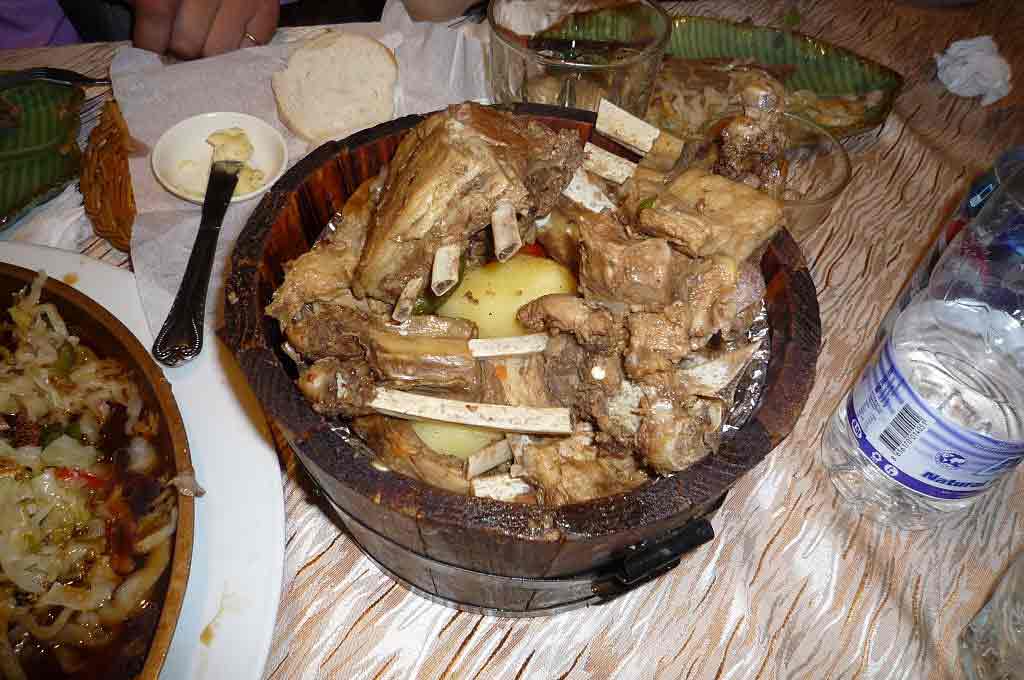
Ulaanbaatar is home to many universities and research institutions, including the National University of Mongolia, which is the country’s largest and oldest university, founded in 1942. The university offers undergraduate and graduate programs in a variety of fields, including science, engineering, medicine, humanities, social sciences, and education.
Other notable universities in the city include the Mongolian University of Science and Technology, which was founded in 1959 and is a part of the National University of Mongolia. It specializes in as the name states engineering and technology. There is also the Mongolian State University of Education, which is dedicated to teacher training and education research.
In addition to universities, Ulaanbaatar is also home to many research institutions, including the Mongolian Academy of Sciences, which was established in 1961 and conducts research in a wide range of fields, from agriculture to geology to history. Other research institutions in the city focus on areas such as renewable energy, biotechnology, and environmental science.
With a land size of 4,704 km² (1,816 mi²), Ulaanbaatar is bigger than 31 countries recognized by the United Nations. Here is a list of some of the countries that Ulaanbaatar is bigger than:
Ulaanbaatar also has a population of around 1.65 million people. Here is a list of some of the countries that have a smaller population than Ulaanbaatar: